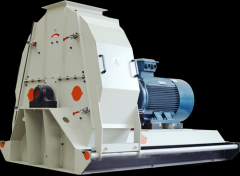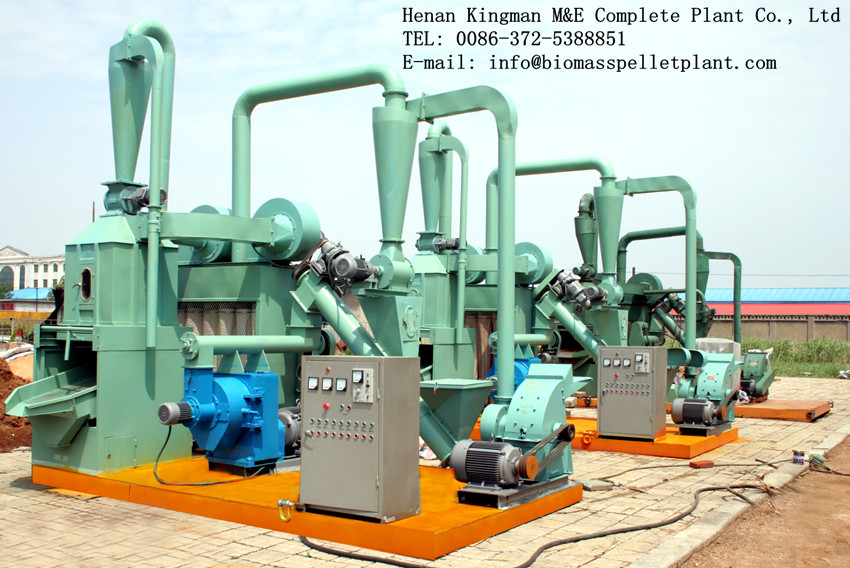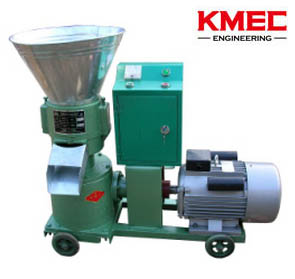Biomass Pellet Press Machines
Over the past decades, more and more people who possess rich biomass waste material become aware of the importance of biomass energy and environment protection. Actually, profits from the biofuel industry also attract more people put investment in this kind. To maximize the value of eco-friendly biofuel, biomass pellet press machines have been upgraded for several generations in design and elements of the pellet presses to really appropriately process high-density pellets such as wood pellets, grass pellets or any other pellets for heating systems or cooking applications and either in industrial use or domestic use.

Biomass pellet press machine technically are taken as the core of pelletizing equipment within a pellet plant. Perhaps you have seen that various classification schemes of pellet mills were made out there. On most occasions, pellet press machines could be divided into two models, namely small scale ones and the big model. Small-scale biomass pellet presses are referred to as flat die pellet mills, quite easily fit for squeezing biomass pellets on a small scale with a comperatively lower power consumption. While the big biomass pellet machines are actually for processing pellets on a large scale for industrial purposes. Flat die pellet press and ring die pellet press can cater to demands from clients for different production yields. The flat die pellet making machine runs with the mold placed horizontally and with a lower pellet output, and the small pellet machines are affordable for many more individual customers. However, the ring die pellet presses are much larger than the flat dieones.

Biomass pellets extruded through biomass pellet presses are the most prevailing biofuel across the world market. With different uses, biomass pellet press machines can process fuel pellets in different dimensions. Usually, biomass pellets have a column shape at the plethora of 6-8mm cross section, yet no more than 38mm. After converted into the uniform solid form, then fuel can be easily handled, such as for transportation and storagedue to the compact structure. According to research done by the Pellet Fuel Institute (PFI), a connecting network of stove producers, fuel producers as well as pellet producers has been built up and the pellet fuel standards on wood pellets have been issued like DIN-pellets which appearantly is the German standard. Therefore, biomass pellets produced by biomass pellet press machines are separated into two grades, namely Premium Grade and Standard Grade. The two standards jointly help fuel customers to choose best-quality pellets fuel for their ovens or furnaces respectively.
News
- Small Pellet Machine Manufacturer-Kingman
- Application of Wood Pellets and Use of Biomass Pellets
- From Fossil Fuel into Biomass Pellet Fuel
- Biomass Pellet Making Machines Market
- Applying of pellet stoves for home use
- Highland pellets to build $130 million facility in arkansas
- How to deal with the blocked hammer mill
- How to Make Wood Pellets with Sawdust
- The government policy promotes the development of biomass fuel
- Market analysis of biomass pellet fuel
- Strategic positioning of renewable energy
- Biomass energy has pass through the pre assessment
- The key point of deep processing of biomass pellet
- Harbin is promoting the development of biomass machinery
- The development of biomass formation technology I
- The development of biomass formation technology II
- Biomass energy industry is now going full tilt in 2015
- Rapid increasing demand of sawdust pellet on the market
- Pellet fuel market in EU
- Chinese Biomass Energy Conference held in Beijing
- Future market development of straw pellet mill
- Peanut Shell Pellet Mill Makes High Quality Pellets
- The utilization of straw is only 5%, biomass energy needs our attention!
- Corn straw pellet machine relieves the tight supply of fuel energy
- Reasons for loose or not forming of biomass pellet mill





